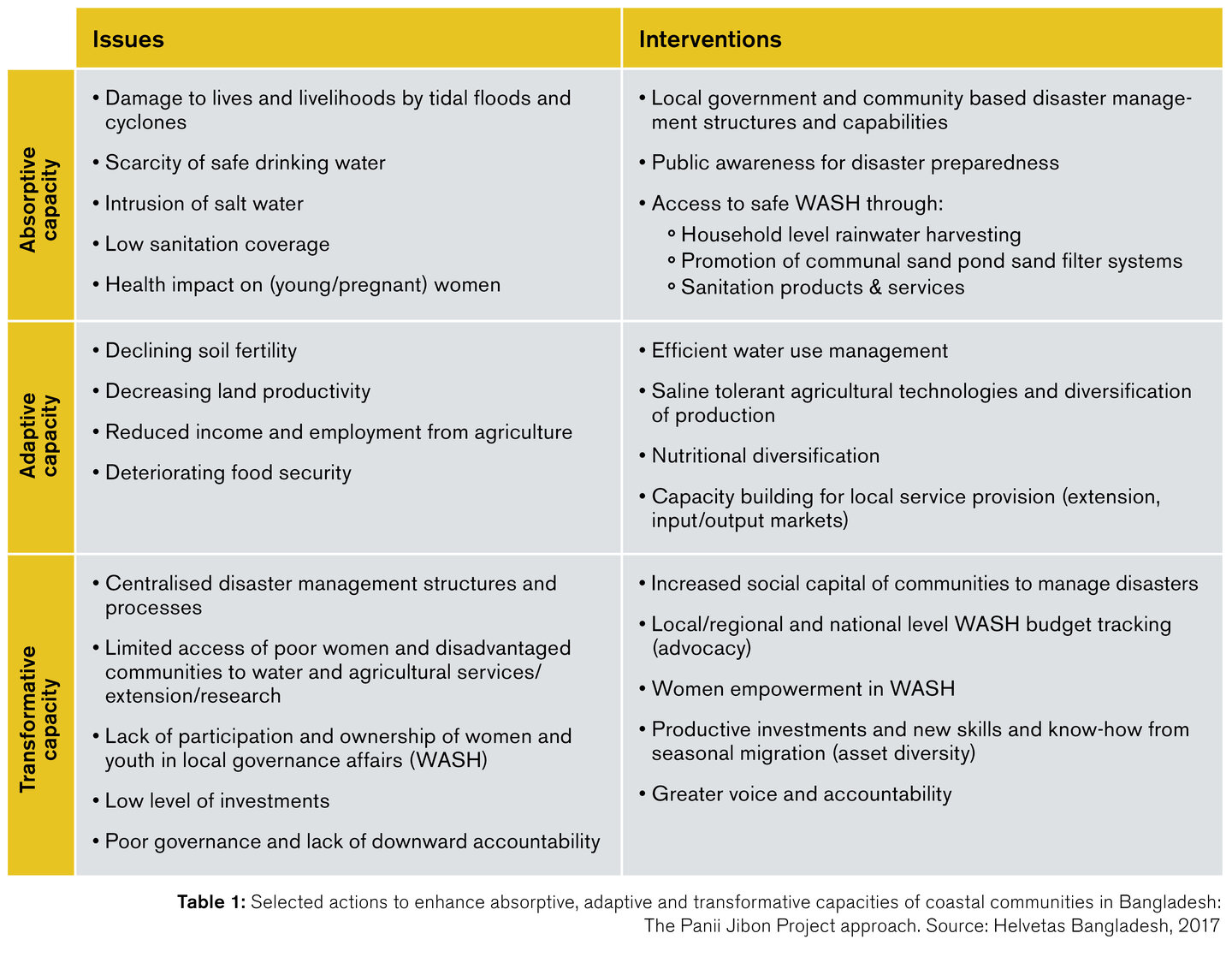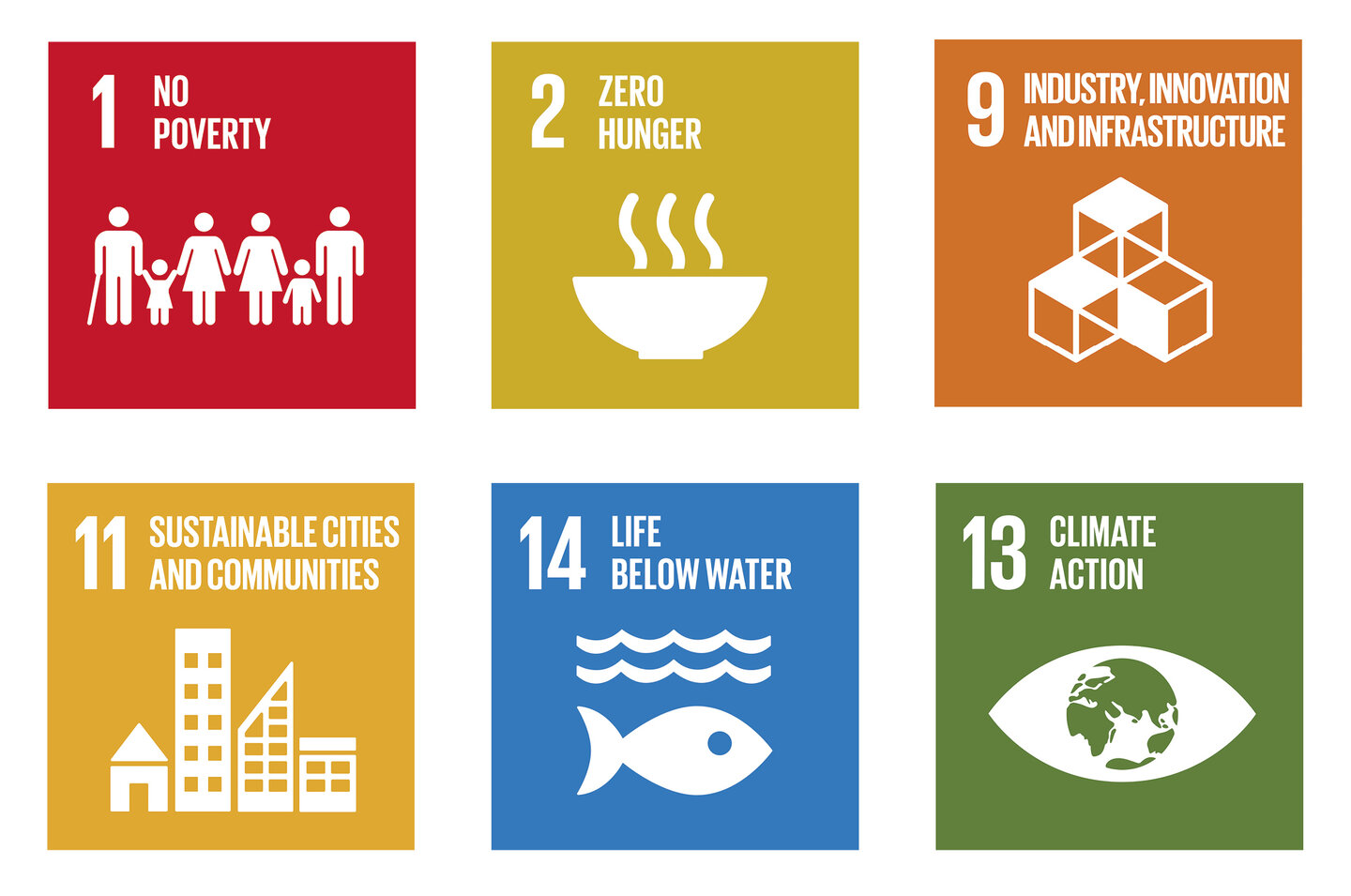Resilience is now recognised as a core development concept and refers to an ability to recover from a shock and to adapt to a disturbance. It has proved a useful concept for promoting multi-disciplinary interventions across different sectors. Resilience thinking requires an understanding of the system (e.g. a community or country) and an acknowledgement that it is exposed to several types of simultaneous risks – disasters, climate change, conflict, economic crisis, political changes – and that many of them are interconnected across different scales.
What is resilience?
In everyday language resilience refers to the ability to recover quickly from an unfavourable event. There are many academic definitions of resilience, which reflect its multidisciplinary history and how the term has evolved over the last decades. Resilience was first understood to be about “bouncing back” or “coping”, implying a return to a previous state (status quo). Later, the definition was broadened to include improvements to systems after a shock. The latest definition highlights a capacity for reorganisation and transformation and takes into account both “events” (shocks) and “disturbances” (trend). The shift from assuming that environments are stable to recognising that they are dynamic is relevant, as global trends such as urbanisation and climate change confirm that “change” is the new normal and “bouncing back” is insufficient. Resilience is therefore an ability to manage change in the context of dynamic systems and a means to achieve a goal, such as food security, health status, etc.
Absorption, adaptation and transformation
Absorptive Capacity is the ability to cope with and absorb the effects of shocks and stresses without sustaining permanent harm or damage. Examples of this capacity are preventive measures and coping strategies such as improved access of rural households to financial backing (e.g. savings, micro-finance services) and social networks that provide support and informal safety nets.
Adaptive Capacity is the ability of individuals or societies to adjust and adapt to shocks and stresses while still functioning in broadly the same way overall. Some examples of this are activities related to livelihoods diversification, climate-change adaptation, skills development, agroecology, etc.
Transformative Capacity is the ability to change the system fundamentally when its current modus operandi is no longer viable. It refers to systemic changes that overthrow the status quo and expand the boundaries of the system. A classic example is rural-urban migration, but other examples are mechanisation, the use of mobile phones for rural services and changes in the energy sector (from fossil energy to renewables).
Adaptive Capacity is the ability of individuals or societies to adjust and adapt to shocks and stresses while still functioning in broadly the same way overall. Some examples of this are activities related to livelihoods diversification, climate-change adaptation, skills development, agroecology, etc.
Transformative Capacity is the ability to change the system fundamentally when its current modus operandi is no longer viable. It refers to systemic changes that overthrow the status quo and expand the boundaries of the system. A classic example is rural-urban migration, but other examples are mechanisation, the use of mobile phones for rural services and changes in the energy sector (from fossil energy to renewables).

Because systems are exposed to simultaneous shocks and stresses of different kinds, intensities and scales, the three types of capacities are complementary and interdependent. Strengthening resilience is not about choosing one particular capacity, but about diversifying options and enhancing the ability of communities to choose the right combination. Helvetas’ Panii Jibon project in Bangladesh works in all three dimensions, analysing the key issues and interventions as shown in the table below.

Current Salience in Development Cooperation
In recent years, several donors and development agencies have embraced resilience as a concept and now support resilience-building initiatives and projects. The Green Climate Fund (GCF), the World Bank (with its Pilot Program for Climate Resilience PPCR) are some of the organisations that support resilience actions. Furthermore, major international NGOs and alliances have incorporated resilience into their programmes. Various governments are increasing their budget allocations to resilience programmes such as the Drought Disaster Resilience Sustainability Initiative in Africa.
Currently, the concept of resilience is being applied in disaster risk management, climate-change adaptation, conflict prevention and natural resource management. Its influence is also expanding to other thematic areas such as health, education, social protection, food security, conflict and fragility, gender and agriculture.
Currently, the concept of resilience is being applied in disaster risk management, climate-change adaptation, conflict prevention and natural resource management. Its influence is also expanding to other thematic areas such as health, education, social protection, food security, conflict and fragility, gender and agriculture.
Entry points to resilience from different thematic areas
The concept of resilience with its three capacities offers multiple entry points and linkages to a broad range of thematic areas including the five working areas of Helvetas. To give a few examples:
Sustainable management of natural resources ensuring the provision of ecosystem services, better provision of water services, improved incomes and financial inclusion of communities and disadvantaged groups increase the absorptive capacities of systems; so do diversified vocational skills of people and efforts to make governments more accountable. The adaptive capacities of systems are enhanced by introducing more drought tolerant crops and other changes of farming practices to adapt to the effects of climate change, more efficient water use or innovations in production. Changes in livelihood strategies, building up entirely new skills sets, migration and the introduction of new technologies support transformations of systems. Empowering people as citizens to effectively participate in decision-making, increasing the voice of stakeholders and re-negotiating rights of disadvantaged people and communities to resources equally has transformative effects.
Resilience, sustainable development and the SDGs
Sustainable development and resilience are complementary concepts. Given the current global changes (e.g. urbanisation, climate change) a development strategy is not sustainable if it is not resilient. Thus, resilience can be considered a pre-condition for sustainable development. By understanding how a system can use and combine its three types of resilience capacities, communities are more likely to achieve the desirable goal of sustainable development. The Sustainable Development Goals (SDGs) – a set of 17 goals, targets and indicators that all UN member states use to frame their agendas and policies to end poverty – aim “to shift the world on to a sustainable and resilient path”. Resilience has been explicitly included in the following six goals and implicitly in additional goals and targets:

Challenges in implementation
Resilience is an intuitive concept, which helps to build common ground where different working fields and stakeholders can work together. Nevertheless, there is a risk that resilience means something different to each actor with the result that efforts towards increased resilience are not aligned. Another major challenge is measuring, monitoring and evaluating resilience. This is attracting increased attention, and several organisations are developing measurement and monitoring frameworks.
Further information
Learn more about our work related to projects for resilience and disaster risk management in Bangladesh, Bolivia, Ethiopia, Haiti, Nepal and Pakistan and download the full publications:
Our quarterly newsletter “Highlights”
For development practitioners and anyone interested in our projects and approaches.





